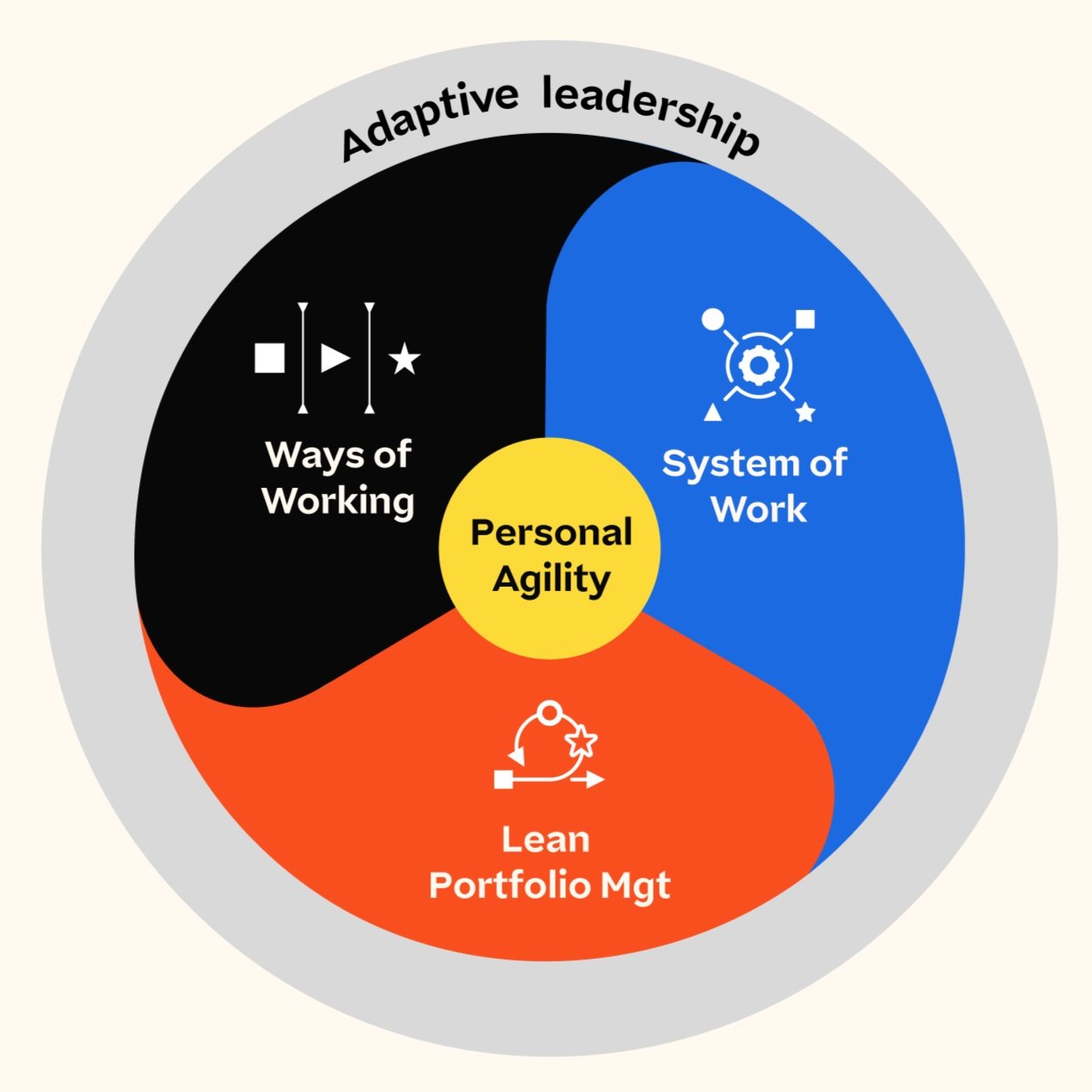A Tale of Two Organisations: A Glimpse into Agility Dynamics
Sian Jones
Unlocking the three dimensions of org agility and a way of leading to achieve it.
Consider two organisations on opposite ends of the agility spectrum. Organisation A, entrenched in traditional methodologies and hierarchical structures, grapples with sluggish decision-making, a lack of collaboration, and a rigid work culture. Everyone is super busy, but innovation is slow, leaders are typically exhausted and the only way to retain people is with financial incentives. In contrast, Organisation B has embraced the principles of organisational agility, is fostering transparent communication, collaboration, and employee empowerment. People have autonomy over their work, a sense of safety and purpose, and strong desire to help the business achieve its vision.
Which organisation would you like to be part of?
Unlocking Organisational Agility: Three Dimensions of Transformation
Ways of Working: This dimension encapsulates the practices, tools, and methodologies that optimise team performance. The goal here is to enhance communication, collaboration, empowerment, and engagement. This could include stand-ups, visual management boards and retrospectives – but what works for one team, won’t necessarily work for another – so these Ways of Working should be co-designed with the team, flex and evolve in line with the work.
Lean Portfolio Management: Beyond working better, this dimension focuses on ensuring that organisations are doing the right work, at the right time, by the right people. A Lean Portfolio Management approach facilitates innovation, speed to market, and effective decision-making processes. So, rather than everything having Priority 1 status, the team identifies and agrees on what the key priorities are (based on their strategy) and either assigns other priorities to different teams, delays them for another quarter or kills them completely.
System of Work: The pinnacle of organisational agility lies in the organisation's ethos—how things get done, the culture that permeates its operations. Examining the operating model, structure, processes, and procedures provides a holistic view of an organisation's agility. A good example of a system of work are KPIs. Many organisations want greater team collaboration, but they have individual KPIs, rather than team KPIs in place. This typically leads to people focussing on their own goals to ensure their own security, rather than collective achievements.
Adaptive Leadership: A Way of Leading that Encircles Organisational Agility
Interwoven with organisational agility is the concept of adaptive leadership. The ability of leaders to navigate uncertainties, foster collaboration, and align the organisation's strategic goals with its operational realities is essential. Organisational agility hinges on the efficacy of leaders to resist a command and control style of leading, sit with ambiguity, adapt to change constantly and consistently communicate the vision, while holding the journey loosely.
Personal Agility: The Keystone
Sitting at the centre of the dimensions is Personal Agility. Personal Agility refers to an individual's capacity to navigate and adapt to change with ease, incorporating a dynamic and responsive mindset. It involves the ability to swiftly learn and adjust in the face of evolving circumstances, leveraging one's skills and knowledge effectively. At its core, personal agility empowers individuals to proactively respond to challenges, fostering a continuous learning mentality that enables them to thrive in a rapidly changing environment. It is unlocked with self-awareness and a commitment to self-improvement.
Challenges and Solutions: Crafting a Tailored Approach
There are pitfalls to organisational agility. Some organisations fall into the trap of rigid frameworks or generic methodologies, leading to resistance and rejection—especially when trying to apply strict Agile methodologies to non-software development teams. At this point they tend to go back to old ways of working, preferring what is known, to what is different. A more effective strategy involves embracing the principles of agility—cross-functional collaboration, customer-centricity, rapid iteration—and tailoring them to fit the unique context of the organisation. Afterall, it’s more about the shift in mindset than the terms and tools you use.
Where to Begin? A Personalised Starting Point
For all the Organisation A’s out there, wishing to be more like Organisation B, we know it can feel daunting. The million-dollar question echoes: where do you start?? The answer is simple—start where you can and iterate from there. While a top-down coordinated approach has its merits, successful transformations have also emerged from grassroots initiatives. Rather than feel overwhelmed by the enormity of the change, the key is to infuse the principles of organisational agility throughout the organisation, fostering a culture that adapts, learns, and thrives in an ever-changing business landscape. When the mindsets shift, agility will follow.
